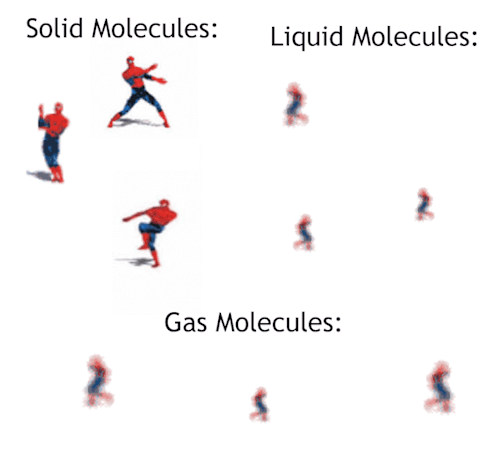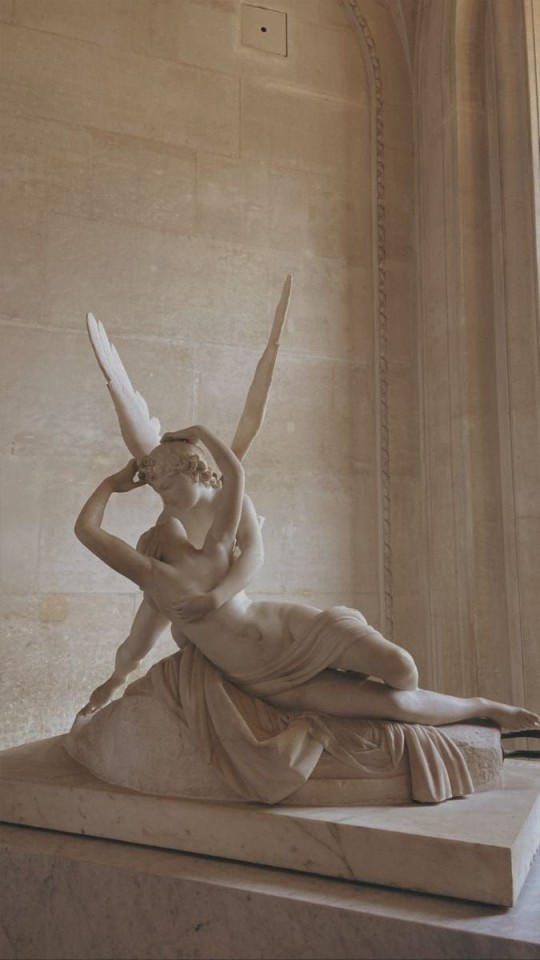Why Did I Think Anyone Would Like This?

Why did I think anyone would like this?
More Posts from Endless-bloomelle and Others


Millipede under UV light. Many species of arthropods fluoresce, or glow, under ultraviolet light due to due to fluorescent compounds in their exoskeletons. At least one millipede genus, motyxia, is actually bioluminescent, meaning it can produce light on its own.
🐛 b.seahphotography on IG

My science teacher writes a joke on this board every week, they are so bad that they are funny and I love it
Slime Molds and Intelligence

Okay, despite going into a biology related field, I only just learned about slime molds, and hang on, because it gets WILD.
This guy in the picture is called Physarum polycephalum, one of the more commonly studied types of slime mold. It was originally thought to be a fungus, though we now know it to actually be a type of protist (a sort of catch-all group for any eukaryotic organism that isn't a plant, animal, or a fungus). As protists go, it's pretty smart. It is very good at finding the most efficient way to get to a food source, or multiple food sources. In fact, placing a slime mold on a map with food sources at all of the major cities can give a pretty good idea of an efficient transportation system. Here is a slime mold growing over a map of Tokyo compared to the actual Tokyo railway system:

Pretty good, right? Though they don't have eyes, ears, or noses, the slime molds are able to sense objects at a distance kind of like a spider using tiny differences in tension and vibrations to sense a fly caught in its web. Instead of a spiderweb, though, this organism relies on proteins called TRP channels. The slime mold can then make decisions about where it wants to grow. In one experiment, a slime mold was put in a petri dish with one glass disk on one side and 3 glass disks on the other side. Even though the disks weren't a food source, the slime mold chose to grow towards and investigate the side with 3 disks over 70% of the time.

Even more impressive is that these organisms have some sense of time. If you blow cold air on them every hour on the hour, they'll start to shrink away in anticipation when before the air hits after only 3 hours.
Now, I hear you say, this is cool and all, but like, I can do all those things too. The slime mold isn't special...
To which I would like to point out that you have a significant advantage over the slime mold, seeing as you have a brain.
Yeah, these protists can accomplish all of the things I just talked about, and they just... don't have any sort of neural architecture whatsoever? They don't even have brain cells, let alone the structures that should allow them to process sensory information and make decisions because of it. Nothing that should give them a sense of time. Scientists literally have no idea how this thing is able to "think'. But however it does, it is sure to be a form of cognition that is completely and utterly different from anything that we're familiar with.

AFRICAN PENGUINS IDENTIFY PATNERS BY THEIR CHEST DOTS
Birds are known to be highly social and visual animals, and penguins are not the exception, as they live in dense colonies. Yet no specific visual feature has been identified to be responsible for individual recognition in birds. Now, researchers demonstrate that african penguins (Spheniscus demersus) can recognize their each others using their ventral dot patterns.
Researchers placed a experiment at the Zoomarine Marine Park, in Rome, Italy, to test how penguins will react to a model with plain with no dot penguin, and to penguins with dots, to find out penguins actually could visually recognize the dots of their lovers and friends in the zoo.
Penguins rely strongly on their ventral dot patterns for individual recognition, and may have holistic representations of other penguins in the colony. In this video below, an african penguin named Gerry appears to recognize his mate, Fiorella (left), in an individual recognition experiment.
These findings suggest that african penguins may rely on a more holistic visual representation of their partner, which includes both the ventral dot patterns and their partner's facial features. Notably, these abilities are not dependent on the ability of a pair to produce offspring together. Nemo and Chicco, male partners, showed the same preference for each other as other penguin partner pairs, suggesting that the ability to distinguish the partner from others is driven simply by the special bond developed between nesting partners.
Photo: Few members of the Zoomarine Italia penguin colony. Unique ventral dot patterns are visible on each penguin's chest. Photo: Cristina Pilenga.
Baciadonna et al., 2024. African penguins utilize their ventral dot patterns for individual recognition. Animal Behaviour.

Feelings Wheel❤️
In order to discuss your feelings and emotions, you must know how to appropriately name them.
Putting a name to what you're feeling helps you to gain clarity and move forward with identifying your next step toward healing or resolution 💜

Antonio Canova (1757-1822) Psyche Revived By Cupid's Kiss. Musée du Louvre
-
 mrs-mayonnais3 liked this · 2 weeks ago
mrs-mayonnais3 liked this · 2 weeks ago -
 largeheaf reblogged this · 2 weeks ago
largeheaf reblogged this · 2 weeks ago -
 maskie-doodle liked this · 2 weeks ago
maskie-doodle liked this · 2 weeks ago -
 aphyria liked this · 2 weeks ago
aphyria liked this · 2 weeks ago -
 dreamsong235 reblogged this · 2 weeks ago
dreamsong235 reblogged this · 2 weeks ago -
 dreamsong235 liked this · 2 weeks ago
dreamsong235 liked this · 2 weeks ago -
 xollos reblogged this · 2 weeks ago
xollos reblogged this · 2 weeks ago -
 deepseameadow liked this · 2 weeks ago
deepseameadow liked this · 2 weeks ago -
 booooop-a-loop liked this · 2 weeks ago
booooop-a-loop liked this · 2 weeks ago -
 edwardhydez reblogged this · 2 weeks ago
edwardhydez reblogged this · 2 weeks ago -
 edwardhydez liked this · 2 weeks ago
edwardhydez liked this · 2 weeks ago -
 daffodil-hill reblogged this · 2 weeks ago
daffodil-hill reblogged this · 2 weeks ago -
 daffodil-hill liked this · 2 weeks ago
daffodil-hill liked this · 2 weeks ago -
 edd33bld liked this · 3 weeks ago
edd33bld liked this · 3 weeks ago -
 tequilazaku liked this · 3 weeks ago
tequilazaku liked this · 3 weeks ago -
 johnadamsnotquincy liked this · 3 weeks ago
johnadamsnotquincy liked this · 3 weeks ago -
 antimnemonic reblogged this · 3 weeks ago
antimnemonic reblogged this · 3 weeks ago -
 kaizokushojo liked this · 3 weeks ago
kaizokushojo liked this · 3 weeks ago -
 miles-is-so-gay liked this · 3 weeks ago
miles-is-so-gay liked this · 3 weeks ago -
 almightynewt liked this · 3 weeks ago
almightynewt liked this · 3 weeks ago -
 almightynewt reblogged this · 3 weeks ago
almightynewt reblogged this · 3 weeks ago -
 cidowo liked this · 3 weeks ago
cidowo liked this · 3 weeks ago -
 happychildcreation liked this · 3 weeks ago
happychildcreation liked this · 3 weeks ago -
 happychildcreation reblogged this · 3 weeks ago
happychildcreation reblogged this · 3 weeks ago -
 gay-chimpanzee liked this · 3 weeks ago
gay-chimpanzee liked this · 3 weeks ago -
 trans-noah liked this · 3 weeks ago
trans-noah liked this · 3 weeks ago -
 tiny-space-whale reblogged this · 3 weeks ago
tiny-space-whale reblogged this · 3 weeks ago -
 tiny-space-whale liked this · 3 weeks ago
tiny-space-whale liked this · 3 weeks ago -
 redmarkerstudent reblogged this · 3 weeks ago
redmarkerstudent reblogged this · 3 weeks ago -
 redmarkerstudent liked this · 3 weeks ago
redmarkerstudent liked this · 3 weeks ago -
 lotriscool liked this · 3 weeks ago
lotriscool liked this · 3 weeks ago -
 alloftheshame liked this · 3 weeks ago
alloftheshame liked this · 3 weeks ago -
 smol-unis-reblogs reblogged this · 3 weeks ago
smol-unis-reblogs reblogged this · 3 weeks ago -
 smol-unis-reblogs liked this · 3 weeks ago
smol-unis-reblogs liked this · 3 weeks ago -
 thedragondirewolf95 liked this · 3 weeks ago
thedragondirewolf95 liked this · 3 weeks ago -
 jazzgyukatsu liked this · 3 weeks ago
jazzgyukatsu liked this · 3 weeks ago -
 emilnikos reblogged this · 3 weeks ago
emilnikos reblogged this · 3 weeks ago -
 emilnikos liked this · 3 weeks ago
emilnikos liked this · 3 weeks ago -
 goofyjelly reblogged this · 3 weeks ago
goofyjelly reblogged this · 3 weeks ago -
 notsogoofyjelly liked this · 3 weeks ago
notsogoofyjelly liked this · 3 weeks ago -
 tartrazeen reblogged this · 3 weeks ago
tartrazeen reblogged this · 3 weeks ago -
 knightsofrayx reblogged this · 3 weeks ago
knightsofrayx reblogged this · 3 weeks ago -
 golddragon387 reblogged this · 1 month ago
golddragon387 reblogged this · 1 month ago -
 abyssalspark liked this · 1 month ago
abyssalspark liked this · 1 month ago -
 brokenyellowcrayons reblogged this · 1 month ago
brokenyellowcrayons reblogged this · 1 month ago -
 indeedjaffa liked this · 1 month ago
indeedjaffa liked this · 1 month ago -
 66dataa liked this · 1 month ago
66dataa liked this · 1 month ago -
 endless-bloomelle reblogged this · 1 month ago
endless-bloomelle reblogged this · 1 month ago -
 trustedwithchemicals liked this · 1 month ago
trustedwithchemicals liked this · 1 month ago

"Endlessly blooming, even in the quiet seasons."29 - F - The Pyrenees, Spain.⋆。‧˚ʚ♡ɞ˚‧。⋆
24 posts



